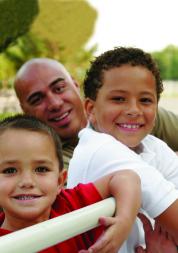Young people and vaping in Haringey

The research explores attitudes towards, and awareness of, vaping and vaping products. The research also looks at vape usage, health implications, the attraction and appeal of vapes, and the motivations for vaping.
The research found that vaping is regarded as socially acceptable among pupils. They find it easy to obtain vapes which may contain unknown substances in some cases. Social media has played a role in the attraction and popularity of vaping among young people.
The report recommends increased joint-working among local partners, schools and healthcare services.
Research methods
We conducted a survey, completed by over 350 pupils in three secondary schools. We organised focus groups with 60 pupils at three schools. We also interviewed six teachers and two school nurses.
Key research insights
- Vaping is regarded as socially acceptable among pupils.
- There is easy access to vapes for young people in Haringey.
- Social media has played a role in the attraction and popularity of vaping among young people.
- Illicit vape sales are prevalent in Haringey and neighbouring boroughs.
- Other substances are mixed into vapes, sometimes unbeknown to pupils.
- The role of the ‘micro-spaces’ of vaping at schools, where small communal spaces for privacy become ‘contested spaces’ between privacy and the vaping.
- Better statutory joint-working is required.
Vaping is more accessible [than smoking], you can just go to the toilet like you don’t have to go outside.
Recommendations
We recommended actions for national and local government and for local schools and the NHS.
Local-level recommendations
- Increased joint-working among local partners, schools and healthcare services in Haringey.
- Litter-picking initiatives within schools involving pupils to actively engage in their local environment.
- Creative interventions via social media about the harms of vaping.
- Vape-bins outside schools (this was suggested by pupils in the research) and in community with associated vaping outreach activities.
- Support schools to strengthen the impact of their existing safeguarding policies around vaping, especially in high-risk areas such as toilets and playgrounds.
- Workshops and outreach about vaping for pupils at schools, along with highlighting the dangers when other substances are incorporated.
- Continue to offer non-judgmental smoking, vaping and drugs information and counselling.
National-level recommendations
- Increased regulation of the marketing and sale of vapes to pupils.
- Measures to make vaping less appealing to children.
- Support parents with information about vaping so that they are equipped to have conversations with their children.
- Tax on disposable vapes and e-cigarettes, so they are less affordable.
- Strengthening collaboration with consistent follow-up communication and coordinated support between healthcare, schools and public health.

